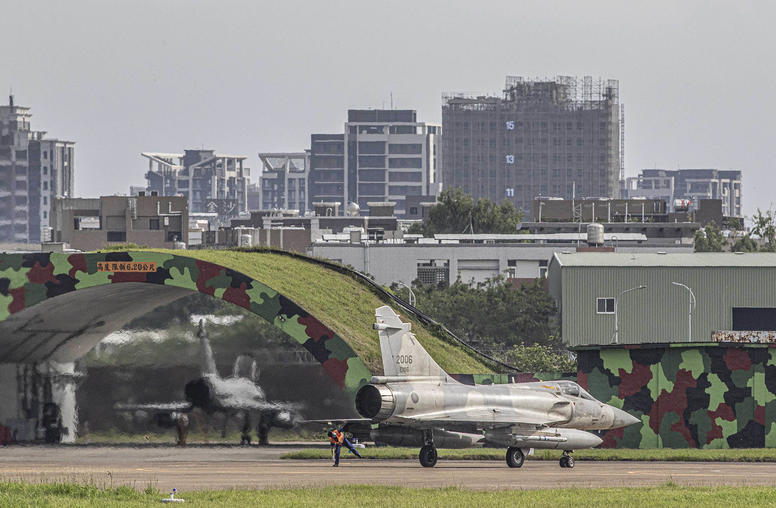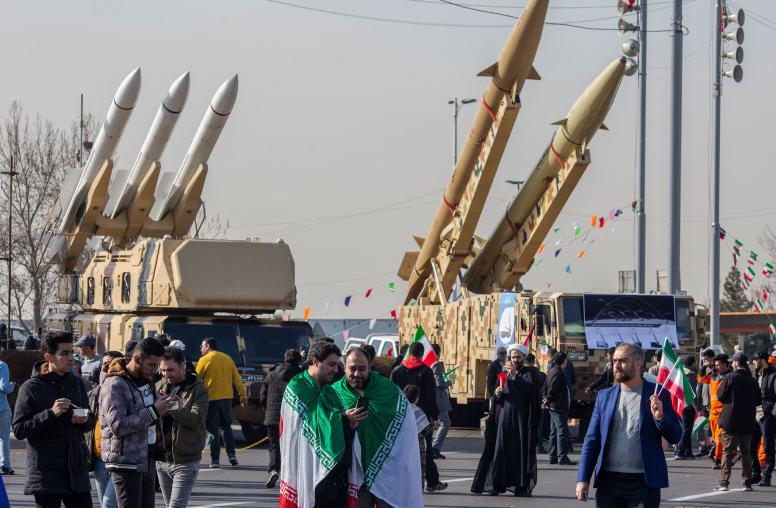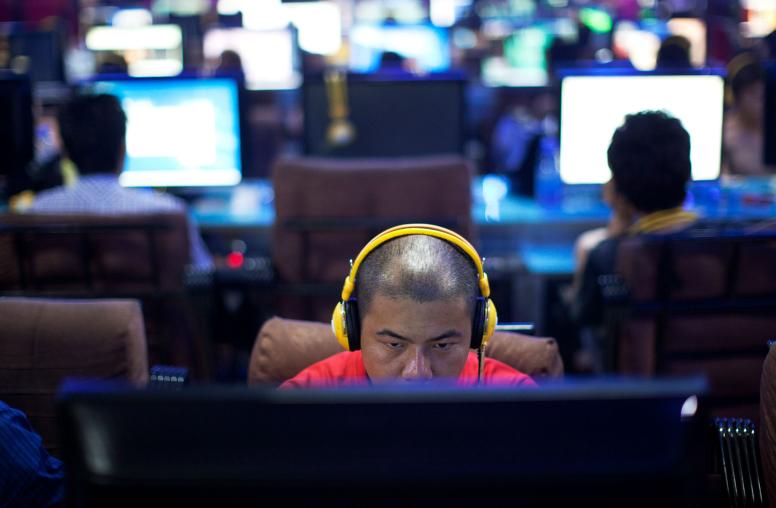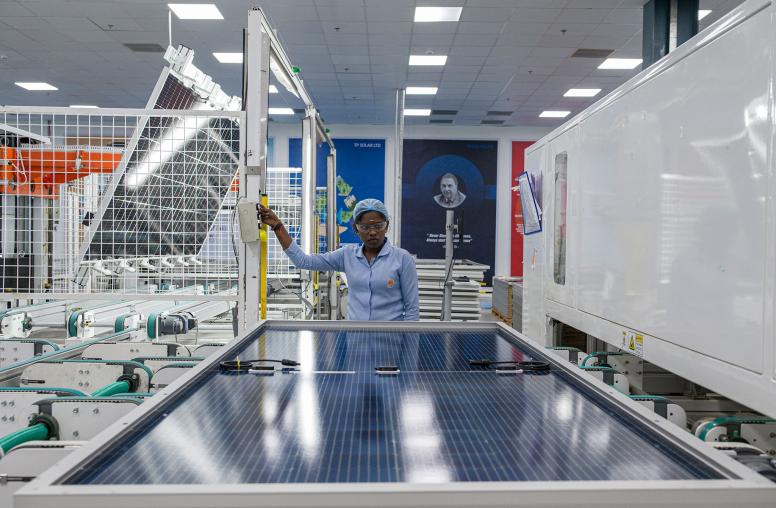China and Yemen’s Forgotten War
Yemen is facing an acute humanitarian crisis after nearly three years of civil war, with more than 10,000 deaths and three-quarters of the country’s population in dire need of humanitarian assistance. Although eschewing a leadership role, China has supported regional and international efforts to mitigate the conflict in Yemen and has supplied the country with humanitarian aid. This Peace Brief discusses China’s diplomatic efforts in Yemen’s transition and peace process and its potential role in postwar reconstruction.
Summary
- China’s position on the Yemen conflict is driven primarily by its interest in maintaining close strategic relations with Saudi Arabia. As a result, Beijing has acquiesced to the Saudi-led military campaign in Yemen.
- Although not taking a prominent leadership role, China has supported regional and international initiatives to mitigate the conflict, including the Gulf Cooperation Council Initiative, the National Dialogue Conference, and UN-led peace talks.
- As Yemen’s major trade partner, China has an outsized economic presence in the country and can play a significant economic role in Yemen’s postwar reconstruction through its Belt and Road Initiative.
Introduction
China is playing a supportive, though low-key, role in international efforts to propel Yemen’s peace process in response to one of the world’s greatest humanitarian crises. The Chinese government has backed the political transition process led by the Gulf Cooperation Council (GCC) as well as the peace talks brokered by the United Nations. Beijing, however, has been unwilling to challenge the Saudi-led air campaign against opposition groups that has killed civilians in a spiraling conflict that has already taken over ten thousand lives—including, in December 2017, that of former president Ali Abdullah Saleh by the Houthi rebels.1
The current conflict has deep historical roots and reflects long-standing societal and political grievances within Yemen. As the Arab Spring swept through Egypt and Tunisia, Yemen also experienced a popular uprising in 2011 against President Saleh’s thirty-three-year autocratic rule. Several large tribes and the Houthis, a predominantly Shia Zaidi group from northern Yemen, joined the protests. Saleh responded by pitting factions of his regime against each other. Yemen’s deep political divisions were further exacerbated by the involvement of competing regional powers: Saudi Arabia and the United Arab Emirates (UAE) backed Yemen’s government while, to a lesser extent, Iran assisted the Houthis.
China’s response to the Saudi-led airstrikes, which were militarily supported by the United States and United Kingdom, was muted. While it did not support such military action, Beijing did not want to confront the Saudis or the major powers over Yemen.
Since 2011, China’s policies on the Yemen conflict have been influenced by its desire to foster strong strategic relations with Saudi Arabia. Despite China’s historical friendship with North Yemen and South Yemen, which were among the first Arab countries to recognize the People’s Republic of China, bilateral relations with Riyadh have figured more prominently in Chinese calculations. Saudi Arabia constitutes an important gateway to the Sunni Arab world in the Middle East and Africa. The Kingdom is also a major oil supplier and a regional focal point of China’s Belt and Road Initiative. Chinese and Saudi officials have publicly emphasized respect for each other’s core interests.
For example, Riyadh firmly supports China’s stance on Taiwan, Xinjiang, and the South China Sea.2 Beijing, in turn, respects Saudi security interests in Yemen and has expressed support for President Abd-Rabbu Mansour Hadi’s government, which it called “the legitimate regime of Yemen.”3
GCC Initiative and National Dialogue
In 2011, China was part of the Group of Ten—comprised of the five permanent members of the UN Security Council along with Saudi Arabia, Oman, Kuwait, the UAE, and the European Union— involved in Yemen’s transition process. Former US Ambassador to Yemen Gerald Feierstein said in a September 2017 interview that the Group of Ten was a “tight group” that coordinated closely throughout the negotiations leading up to the GCC Initiative. Before 2011, Moscow and Beijing did not have independent relationships with the opposition parties, so the US Embassy in Yemen kept its Russian and Chinese counterparts briefed on the political situation. This close coordination paid off, and President Saleh’s efforts to split Moscow and Beijing from the Western countries failed, according to Feierstein. In November 2011, Saleh finally signed the GCC Initiative, marking a peaceful transfer of power to his vice president, Abd-Rabbu Mansour Hadi, who became president.
Responsibility for implementing the transition process laid out in the GCC Initiative was divided among the Group of Ten Ambassadors. The United States took the lead on military and security reorganization in Yemen. The United Kingdom was in charge of tracking the reorganization of the Ministry of Interior, and France focused on assisting work to amend the constitution. Although China did not volunteer for any specific role, Ambassador Feierstein noted that Chinese officials supported the implementation process and attended numerous meetings.
Beijing also endorsed the agreements reached in 2014 at the comprehensive National Dialogue Conference, which included the new draft constitution, electoral reform, and plans for timely general elections. The National Dialogue addressed a range of issues facing the country, including southern secessionism, federalism, economic and social development, and human rights.
Sanaa Takeover by Houthis and Arab Military Intervention
In September 2014, the Houthis seized government institutions in Sanaa. In January 2015, the Houthis overran the presidential palace and placed President Hadi under house arrest. (Hadi would later flee to Saudi Arabia.) The following month China voted in favor of Security Council Resolution 2201, which called for the Houthis to immediately and unconditionally withdraw forces from government institutions in Sanaa and abide by the GCC Initiative and National Dialogue outcomes. The Houthis, who allied with Saleh, ignored these demands. On March 25, 2015, Saudi Arabia and a group of Arab states began airstrikes against the Houthis.
China’s response to the Saudi-led airstrikes, which were militarily supported by the United States and United Kingdom, was muted. While it did not support such military action, Beijing did not want to confront the Saudis or the major powers over Yemen. The Chinese government was primarily concerned about the security of its citizens in Yemen, and in March and April the People’s Liberation Army Navy evacuated 629 Chinese citizens and 279 citizens of other countries from Yemen.4 Chinese President Xi Jinping canceled a scheduled April visit to Riyadh, and Xi told Saudi King Salman in a telephone call that efforts to achieve a political solution should be sped up.5
China fully supported all UN Security Council resolutions on the Yemen conflict, notably breaking from Russia. China supported resolution 2216, passed in April 2015, that imposed sanctions—including a general assets freeze, travel ban, and arms embargo—on a Houthi leader and Saleh’s son. Russia, however, abstained on the vote. Moscow seeks a more balanced posture on Yemen though favoring a pro-Iranian presence, whereas Beijing tilts toward Riyadh’s position. Neither Russia nor China views Yemen as a regional priority, and thus both countries have tended to support the international consensus.
Furthermore, China was able to strike a balance between two rival powers by supporting the Saudis on Yemen, on the one hand, and the Iranians on the nuclear deal, on the other. China participated in international negotiations on the Joint Comprehensive Plan of Action, whose implementation coincided with the Saudi bombing in Yemen, and regarded the agreement as a major diplomatic achievement. The Chinese calculated that Yemen was a higher priority for the Saudis than the Iranians, and that the nuclear deal was more significant to Tehran.
Chinese Mediation
Following three unsuccessful rounds of UN negotiations, China tried to bridge the trust deficit between the Houthi-Saleh bloc and the UN. In the summer of 2017, Beijing worked to restart talks between UN Special Envoy Ismail Ould Cheikh Ahmed and the Houthis after communications between the two sides broke down over the Houthi-controlled Hodeidah port. Ahmed proposed that Houthi fighters withdraw from Hodeidah, through which the bulk of international aid reaches the besieged country, and hand it over to a neutral third party under UN supervision. The Houthis, however, accused Ahmed and the UN of bias and favoring Saudi Arabia. China’s ambassador to Yemen, Tian Qi, tried to arrange meetings between Ahmed and the Houthis, but the Houthis rejected the offer and refused to meet with Ahmed. Although China’s attempt to mediate was unsuccessful, Houthi leaders and representatives of Saleh’s General People’s Congress thanked China for taking an objective and impartial stance on the Yemen issue and said they would be willing to maintain close communication with Beijing.6
Aid and Reconstruction
Yemen’s humanitarian crisis urgently needs international aid. Already a destitute country, Yemen now has 20.7 million people—more than three-fourths of its population—in dire need of humanitarian assistance and 17.1 million food-insecure people.7 Yemen also has the world’s largest cholera epidemic, which could reach one million cases by 2018.8 China is a member of the Friends of Yemen conference, which has been collecting funds to address Yemen’s challenges. In July 2017, Beijing delivered a grant of $22.5 million in relief assistance to the Yemeni government and additional funds to the UN’s World Food Programme and the World Health Organization to help combat the cholera epidemic.9 In 2009, the Chinese government gave a $753,000 grant to assist Yemenis displaced by the fighting between the army and Houthi rebels.10
Saudi Arabia and the UAE will likely contribute to Yemen’s postwar reconstruction, but much more aid will be needed. As Yemen’s major trading partner, China has an outsized economic presence in the country and could potentially become a prominent player in its reconstruction. Over the past two decades, China has provided numerous loans and grants to Yemen’s government for development and technical cooperation projects. Both Saleh and Hadi have encouraged Chinese investments. During a 2013 state visit to Beijing, Hadi welcomed more Chinese projects to develop Yemen’s electricity, oil, and gas sectors, and infrastructure. Before the Arab airstrikes, which halted these projects, China had planned to build more gas plants to supply desperately needed electricity and agreed to provide a $508 million soft loan to expand container ports in Aden and Mocha.11 Ambassador Tian said that China is “willing to actively participate in Yemen’s future economic reconstruction process,” as it promotes its Belt and Road Initiative in the region.12
Policy Recommendations
Neither Washington nor Beijing has focused sufficient attention on Yemen, but international pressure and attention in the US Congress are now growing because of the frantic humanitarian crisis. The United States and China need to work with Gulf partners and the UN on a multifaceted strategy to mitigate the conflict in Yemen. This will entail a de-escalation of conflict, including scaling back Arab coalition airstrikes, coupled with peace processes that encompass both internal Yemeni negotiations and efforts by Saudi Arabia and the UAE to support a realistic political settlement with opposition groups. China is in a unique position to work with Russia, Iran, and Oman to help bring the Houthis to the negotiating table. The strategy should also include economic incentives for militias and governments profiting from the war economy to forgo these revenues for a better alternative under a new political framework. More urgently, the international community needs to open channels for Yemenis to receive relief assistance in the face of famine, widespread destruction, and mounting civilian casualties.
Endnotes
- Mohammed Ghobari, “U.N. Says 10,000 Killed in Yemen War, Far More Than Other Estimates,” Reuters, August 30, 2016, www.reuters.com/article/us-yemen-security-toll/u-n-says-10000-killed -in-yemen-war-far-more-than-other-estimates-idUSKCN11516W.
- “China, Saudi Arabia Ink Cooperation Deals,” Xinhua, August 30, 2016.
- “China Offers Support for Yemen Government as Xi Visits Saudi Arabia,” Reuters, January 20, 2016, www.reuters.com/article/us-saudi-china-yemen-idUSKCN0UY0C1.
- “Chinese Warship Carrying 83 Evacuees from Yemen Arrives in Djibouti,” Xinhua, April 7, 2015, http://news.xinhuanet.com/english/2015-04/07/c_134129830.htm.
- “China’s Xi Urges Yemen Resolution in Call with Saudi King,” Reuters, April 18, 2015, www.reuters. com/article/us-yemen-security-china-saudi/chinas-xi-urges-yemen-resolution-in-call-with-saudi -king-idUSKBN0N909420150418.
- Embassy of the PRC in Republic of Yemen, “Tian qi dashi fenbie yu yemen quanguo renmin dahui dang he husai lingdaoren tong dianhua” (“Ambassador Tian Qi Phones Yemen’s General People’s Congress Party and Houthi Leaders”), September 11, 2016, http://ye.china-embassy.org/chn /sgdt/t1396534.htm.
- USAID, “Yemen Complex Emergency Fact Sheet #16,” September 22, 2017, www.usaid.gov/crisis /yemen/fy17/fs16.
- Stephanie Nebehay, “Yemen Cholera Cases Could Hit 1 Million by Year-End: Red Cross,” Reuters, September 29, 2017, www.reuters.com/article/us-yemen-security-redcross/yemen-cholera -cases-could-hit-1-million-by-year-end-red-cross-idUSKCN1C41WA.
- “First Batch of China’s Emergency Humanitarian Aid Arrives in Yemen,” Xinhua, July 14, 2017, http://news.xinhuanet.com/english/2017-07/14/c_136442006.htm.
- AidData, “Global Chinese Official Finance Dataset, 2000-2014, Version 1.0,” October 2017, http://aiddata.org/data/chinese-global-official-finance-dataset.
- Ibid.
- PRC Ministry of Foreign Affairs, “Zhu yemen dashi tian qi yu yemen husai ji quanguo renmin dahui dang lingdao ren tong dianhua” (“Ambassador to Yemen Tian Qi Phones Yemeni Houthis and General People’s Congress Party Leaders”), June 29, 2017, www.fmprc.gov.cn/web/wjdt _674879/zwbd_674895/t1474074.shtml.
About This Brief
This Peace Brief examines China’s policies toward Yemen’s ongoing conflict, engagement in its transition and peace process, and potential role in postwar reconstruction. I-wei Jennifer Chang is a senior program specialist in the China Program at the United States Institute of Peace.



